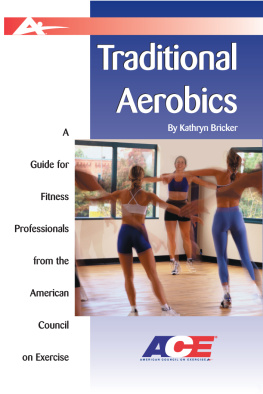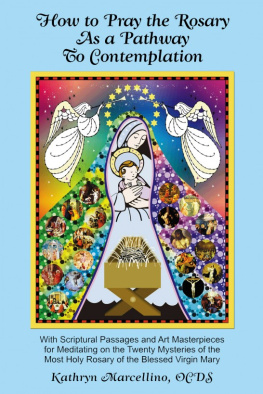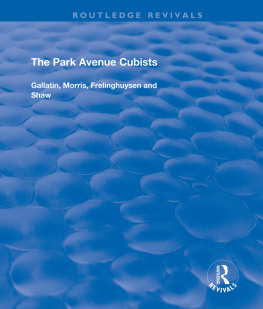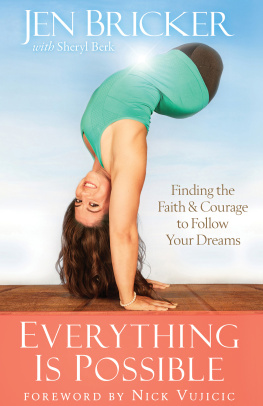Kathryn Bricker - Traditional Aerobics and Step Training
Here you can read online Kathryn Bricker - Traditional Aerobics and Step Training full text of the book (entire story) in english for free. Download pdf and epub, get meaning, cover and reviews about this ebook. year: 2007, publisher: Coaches Choice, genre: Home and family. Description of the work, (preface) as well as reviews are available. Best literature library LitArk.com created for fans of good reading and offers a wide selection of genres:
Romance novel
Science fiction
Adventure
Detective
Science
History
Home and family
Prose
Art
Politics
Computer
Non-fiction
Religion
Business
Children
Humor
Choose a favorite category and find really read worthwhile books. Enjoy immersion in the world of imagination, feel the emotions of the characters or learn something new for yourself, make an fascinating discovery.
- Book:Traditional Aerobics and Step Training
- Author:
- Publisher:Coaches Choice
- Genre:
- Year:2007
- Rating:4 / 5
- Favourites:Add to favourites
- Your mark:
- 80
- 1
- 2
- 3
- 4
- 5
Traditional Aerobics and Step Training: summary, description and annotation
We offer to read an annotation, description, summary or preface (depends on what the author of the book "Traditional Aerobics and Step Training" wrote himself). If you haven't found the necessary information about the book — write in the comments, we will try to find it.
Traditional Aerobics and Step Training — read online for free the complete book (whole text) full work
Below is the text of the book, divided by pages. System saving the place of the last page read, allows you to conveniently read the book "Traditional Aerobics and Step Training" online for free, without having to search again every time where you left off. Put a bookmark, and you can go to the page where you finished reading at any time.
Font size:
Interval:
Bookmark:

REVIEWERS
Jeanne Blocher is the president of Body & Soul Ministries, an international, non-profit fitness organization that offers group fitness classes set to contemporary Christian music. Blocher is certified by Ken Coopers Institute for Aerobics Research, as well as the American Council on Exercise, where she serves as an ACE Faculty member and practical trainer. She has been the choreographer and program designer for Body & Soul since it opened in 1981.
Ross Goo launched a practical training system for new group fitness instructors in 1998. Goo has also been teaching traditional aerobics, step training, group indoor cycling, kickboxing, hip-hop aerobics, boot camp, circuit classes, and powerwalking for more than 10 years.

INTRODUCTION
The American Council on Exercise (ACE) is pleased to introduce Traditional Aerobics, a guide for fitness professionals. Even as the industry contiues to expand, evolve, and redefine itself, traditional aerobics remains a viable component of fitness. Guidelines and criteria have been estanbished so that this exercise modality can be practiced both safely and effectively. The intent of this book is to educate and give guidance to fitness professionals who wish to teach traditional aerobics. As with all areas of fitness, education is a continual process. ACE recognizes this is a broad subject requiring serious study and we encourage you to use the References and Suggested Reading to further your knowledge.

ABOUT THE AUTHOR

Kathryn Bricker, B.S., C.M.A. , is a certified Laban movement analyst, American Council on Exercise continuing education provider, and ACE Gold-certified Group Fitness Instructor. She is a former chairperson of ACEs group fitness certification committee and has served on ACEs item writing and role delineation committees. Bricker has been instructing group fitness full-time since 1979.

Second edition
Copyright 2007, 2000 American Council on Exercise (ACE)
Printed in the United States of America.
All rights reserved. Except for use in a review, the reproduction or utilization of this work in any form or by any electronic, mechanical, or other means, now known or hereafter invented, including xerography, photocopying and recording, and in any information retrieval system, is forbidden without the written permission of the American Council on Exercise.
A B C D E F G
ISBN 978-1-58518-965-6
Library of Congress Catalog Card Number: 2006922359
Distributed by: | Editors: Daniel Green, Christine J. Ekeroth |
Acknowledgments:
Thanks to the entire American Council on Exercise staff for their support and guidance through the process of creating this manual.
NOTICE
The fitness industry is ever-changing. As new research and clinical experience broaden our knowledge, changes in programming and standards are required. The authors and the publisher of this work have checked with sources believed to be reliable in their efforts to provide information that is complete and generally in accord with the standards accepted at the time of publication. However, in view of the possibility of human error or changes in industry standards, neither the authors nor the publisher nor any other party who has been involved in the preparation or publication of this work warrants that the information contained herein is in every respect accurate or complete, and they are not responsible for any errors or omissions or the results obtained from the use of such information. Readers are encouraged to confirm the information contained herein with other sources.

Chapter One
Introduction to Traditional Aerobics
Following the publication of Dr. Kenneth Coopers book Aerobics in 1968, movement forms reflecting a shared cultural value of health and fitness proliferated. Traditional aerobics was among these, tracing its early lineage to such pioneers as Jacki Sorensen, founder of Aerobic Dancing, Inc., and Judi Sheppard Missett, president of Jazzercise, Inc. These women and others adapted Dr. Coopers concept of aerobic exercise to exercise classes with music, creating what became known as aerobic dance-exercise or, simply, aerobics. With the release of Jane Fondas Workout video in 1982, the dissemi-nation of traditional aerobics to a mass market via electronic media forever changed fitness culture worldwide. A 1986 survey published by the International Health, Racquet, and Sportsclub Association (IHRSA) showed that 21.9 million people in the United States participated in aerobics that year. The gender bias of the activity was noted by International Dance-Exercise Association (now IDEA, the International Association of Fitness Professionals), which reported in 1986 that 93.8% of its members were female. American Council on Exercise statistics showed this trend to be holding, reporting in 2005 that 94% of ACE-certified group fitness instructors were female.
Though statistical data showed a downtrand in general participation in the 1990s (American Sport Data, Inc., 1996), traditional aerobics continues to provide the form, methodology, and objectives upon which subsequent group fitness forms have been modeled. While the three primary types of traditional aerobicshigh-impact, combination high-low impact, and low-impactcontinue to appear on group fitness class schedules, many of these classes have taken on new forms to appeal to a wide range of participants. Hip hop and African dance classes, for example, are variations on a traditional aerobics class. Creative fitness professionals continue to come up with new ways to keep participants engaged in group exercise classes.
A primary benefit of traditional aerobics is the social interaction and sense of community that develops from frequent participation and promotes adherence and motivation. In addition to these psychological and motivational benefits, aerobics also provides many of the benefits of physical fitness: cardiorespiratory endurance, muscular endurance, muscular strength, flexibility, and improved body composition.
The potential for freedom of movement is greater in traditional aerobics than many other modes of aerobic training. Only the anatomical limits of the body and the boundaries of the room dictate the form of the movement. By selecting movements that foster biomechanical balance, you can prepare participants for the movement challenges of daily living. Biomechanical balance is achieved when the flexibility and strength of all muscles surrounding a joint are adequately balanced (Figure 1.1). You can create this balance in two ways: 1) select movements that balance one another within the context of the class and 2) select movements that correct the imbalances created during daily movement patterns.
Next pageFont size:
Interval:
Bookmark:
Similar books «Traditional Aerobics and Step Training»
Look at similar books to Traditional Aerobics and Step Training. We have selected literature similar in name and meaning in the hope of providing readers with more options to find new, interesting, not yet read works.
Discussion, reviews of the book Traditional Aerobics and Step Training and just readers' own opinions. Leave your comments, write what you think about the work, its meaning or the main characters. Specify what exactly you liked and what you didn't like, and why you think so.











